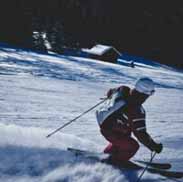Maps Of The World Flashcards, test questions and answers
Discover flashcards, test exam answers, and assignments to help you learn more about Maps Of The World and other subjects. Don’t miss the chance to use them for more effective college education. Use our database of questions and answers on Maps Of The World and get quick solutions for your test.
What is Maps Of The World?
Maps of the world provide us with a visual representation of our planet, displaying geographical features and boundaries that help us to better understand and navigate our way around. Maps are divided into two basic categories: physical maps, which show landforms such as mountains, rivers and deserts; and political maps, which show country borders, cities and other man-made boundaries. Maps can be printed onto paper or viewed online through digital platforms like Google Maps. Physical maps illustrate the natural features of an area mountains, rivers, deserts etc. These types of maps are useful for planning journeys or exploring different terrains. For example, topographic maps allow hikers to track their progress on trails by showing them the elevation changes along the way. Physical maps also help scientists to identify areas prone to natural hazards such as earthquakes or landslides so that appropriate measures can be taken to reduce their impact when they occur. Political maps are used for understanding how countries fit together in terms of their borders and capitals as well as identifying major cities within them. Political maps can also help us map out trade routes between countries or plan a holiday involving multiple stops across different nations. They also give us an insight into the history of certain regions for example by looking at how colonial borders have been redrawn over time due to conflicts between different groups or states. Maps provide us with a window into our world helping us understand its geography in an accessible way while also revealing its fascinating history through subtle details hidden within its lines and shapes. Whether we’re travelling across continents or just exploring our local area they will always remain an essential tool in giving us a better understanding of our planet’s surface layout and political divisions.









